Leanne's Printable Coloring Pages for Kids
Knights of the Round Table Coloring Pages
The Knights of the Round Table are a legendary fellowship of noble and valiant warriors in Arthurian legend. Renowned for their commitment to chivalry, honor, and justice, these knights are bound by a sacred code that fosters unity and equality. Their legendary exploits, often centered around quests for the Holy Grail and battles against mythical beasts, symbolize the embodiment of virtue and the pursuit of an idealized code of conduct. The Round Table itself, where these knights gather, signifies a sense of equality among them, as it lacks a designated head, promoting the idea that each knight is of equal status. The tales of the Knights of the Round Table have inspired countless stories and adaptations, cementing their place in the rich tapestry of Arthurian legend.
The composition of the Knights of the Round Table can vary in different Arthurian legends and retellings. However, some of the most commonly mentioned and prominent knights include:
 King Arthur: The Round Table is a symbol of equality among Arthur's knights, as it lacks a designated head, emphasizing that each knight holds an equal status in the fellowship. While Arthur holds the position of king and leader, he is also counted among the knights who gather at the Round Table, and he participates in quests, battles, and the camaraderie characteristic of the group.
King Arthur: The Round Table is a symbol of equality among Arthur's knights, as it lacks a designated head, emphasizing that each knight holds an equal status in the fellowship. While Arthur holds the position of king and leader, he is also counted among the knights who gather at the Round Table, and he participates in quests, battles, and the camaraderie characteristic of the group.
 Sir Lancelot: Sir Lancelot, the renowned knight of the Round Table, is celebrated not only for his unparalleled skill in combat but also for the complexity of his character, navigating the challenging terrain of love and loyalty. His tragic love affair with Queen Guinevere is a poignant aspect of his story, adding layers of drama and conflict to his legendary exploits.
Sir Lancelot: Sir Lancelot, the renowned knight of the Round Table, is celebrated not only for his unparalleled skill in combat but also for the complexity of his character, navigating the challenging terrain of love and loyalty. His tragic love affair with Queen Guinevere is a poignant aspect of his story, adding layers of drama and conflict to his legendary exploits.
 Sir Galahad: Sir Galahad, often heralded as the epitome of purity and virtue among the knights, embarks on the quest for the Holy Grail with a divine purpose. His exceptional character and spiritual qualities set him apart, as he seeks the holiest of relics, embodying the ideals of the Round Table in his noble quest.
Sir Galahad: Sir Galahad, often heralded as the epitome of purity and virtue among the knights, embarks on the quest for the Holy Grail with a divine purpose. His exceptional character and spiritual qualities set him apart, as he seeks the holiest of relics, embodying the ideals of the Round Table in his noble quest.
 Sir Tristan: Sir Tristan, a skilled and tragic figure among the knights, is celebrated not only for his prowess in battle but also for the heart-wrenching love story with Iseult. The complexities of love, loyalty, and destiny intertwine in his narrative, adding emotional depth to the broader Arthurian saga.
Sir Tristan: Sir Tristan, a skilled and tragic figure among the knights, is celebrated not only for his prowess in battle but also for the heart-wrenching love story with Iseult. The complexities of love, loyalty, and destiny intertwine in his narrative, adding emotional depth to the broader Arthurian saga.

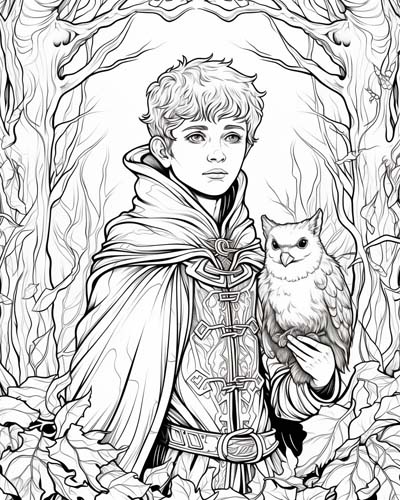 Sir Gawain: Sir Gawain, a figure of unwavering courage and unyielding loyalty, plays a pivotal role in many Arthurian tales. His reputation as a key member of the Round Table is bolstered by his numerous quests and feats of valor, making him a central character in the tapestry of Arthurian legend. Gawain's stories often highlight the challenges and moral dilemmas faced by a knight committed to the code of chivalry.
Sir Gawain: Sir Gawain, a figure of unwavering courage and unyielding loyalty, plays a pivotal role in many Arthurian tales. His reputation as a key member of the Round Table is bolstered by his numerous quests and feats of valor, making him a central character in the tapestry of Arthurian legend. Gawain's stories often highlight the challenges and moral dilemmas faced by a knight committed to the code of chivalry.
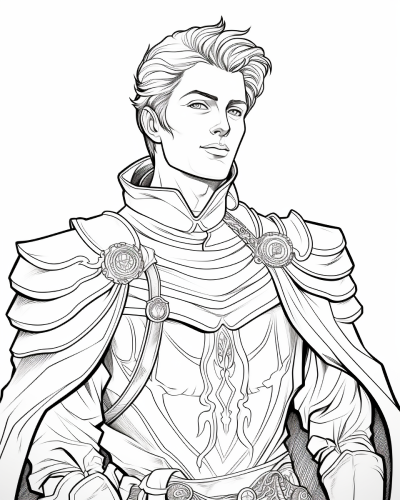
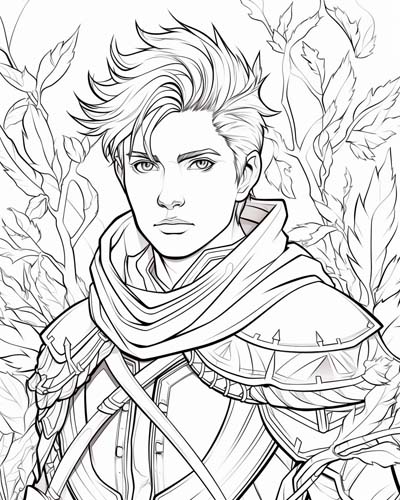 Sir Percival: Sir Percival, recognized for his humble and pure nature, is prominently known for his quest for the Holy Grail. His journey is characterized by spiritual growth and the pursuit of a higher purpose, showcasing the transformative power of noble intentions and virtuous actions among the Knights of the Round Table.
Sir Percival: Sir Percival, recognized for his humble and pure nature, is prominently known for his quest for the Holy Grail. His journey is characterized by spiritual growth and the pursuit of a higher purpose, showcasing the transformative power of noble intentions and virtuous actions among the Knights of the Round Table.
 Sir Bedivere: One of Arthur's most trusted knights, often associated with the events of King Arthur's final battle, the Battle of Camlann. Returned excalibur to the Lady of the Lake.
Sir Bedivere: One of Arthur's most trusted knights, often associated with the events of King Arthur's final battle, the Battle of Camlann. Returned excalibur to the Lady of the Lake.

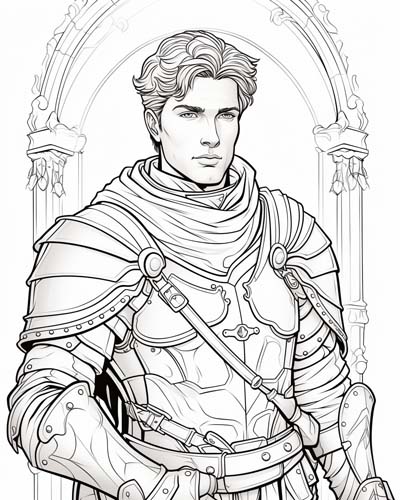 Sir Kay: Sir Kay, Arthur's foster brother and loyal seneschal, contributes a familial and steadfast presence to the Round Table. His role as a trusted confidant and supporter of Arthur underscores the importance of camaraderie among the knights, serving as a pillar of strength within the fellowship.
Sir Kay: Sir Kay, Arthur's foster brother and loyal seneschal, contributes a familial and steadfast presence to the Round Table. His role as a trusted confidant and supporter of Arthur underscores the importance of camaraderie among the knights, serving as a pillar of strength within the fellowship.
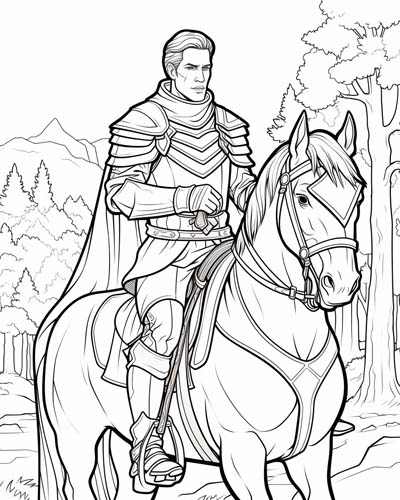 Sir Bors: Sir Bors, a paragon of virtue and honor, is often associated with the quest for the Holy Grail. His unwavering commitment to righteousness and his role in the pursuit of sacred relics solidify his standing as a noble and respected member of the Round Table.
Sir Bors: Sir Bors, a paragon of virtue and honor, is often associated with the quest for the Holy Grail. His unwavering commitment to righteousness and his role in the pursuit of sacred relics solidify his standing as a noble and respected member of the Round Table.
 Sir Lamorak: Sir Lamorak, a knight known for his strength and chivalry, adds a dynamic and valiant dimension to the fellowship. His exploits in battle and adherence to the code of honor contribute to the collective glory of the Knights of the Round Table.
Sir Lamorak: Sir Lamorak, a knight known for his strength and chivalry, adds a dynamic and valiant dimension to the fellowship. His exploits in battle and adherence to the code of honor contribute to the collective glory of the Knights of the Round Table.

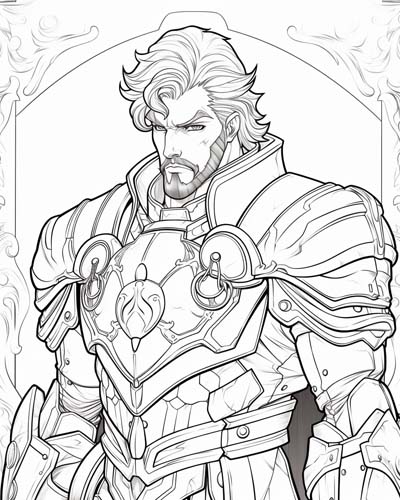 Sir Gareth: Sir Gareth, often depicted as a noble and courageous knight, engages in adventures that showcase his commitment to the ideals of chivalry. His tales contribute to the rich tapestry of Arthurian legend, highlighting the diversity of characters within the fellowship and the collective pursuit of noble virtues.
Sir Gareth: Sir Gareth, often depicted as a noble and courageous knight, engages in adventures that showcase his commitment to the ideals of chivalry. His tales contribute to the rich tapestry of Arthurian legend, highlighting the diversity of characters within the fellowship and the collective pursuit of noble virtues.
Other Knights of the Round Table (alphabetical order):
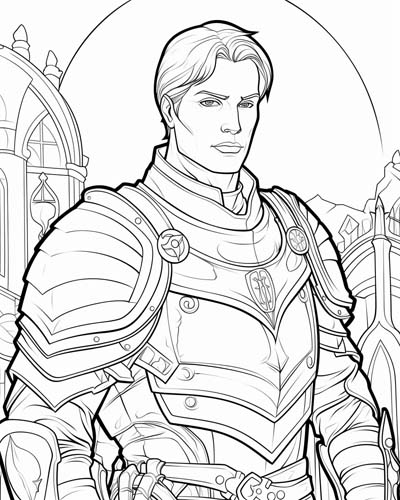 Sir Accolon: Sir Accolon is a lesser-known knight in Arthurian legend, often associated with the enchantress Morgan le Fay. In some versions of the story, he unwittingly becomes involved in a plot against King Arthur, manipulated by Morgan le Fay to duel with Arthur and seize the magical sword Excalibur. Accolon's character adds an intriguing layer of betrayal and magic to the Arthurian tales, as he becomes a pawn in the larger web of intrigue surrounding the legendary sword and the fate of Camelot.
Sir Accolon: Sir Accolon is a lesser-known knight in Arthurian legend, often associated with the enchantress Morgan le Fay. In some versions of the story, he unwittingly becomes involved in a plot against King Arthur, manipulated by Morgan le Fay to duel with Arthur and seize the magical sword Excalibur. Accolon's character adds an intriguing layer of betrayal and magic to the Arthurian tales, as he becomes a pawn in the larger web of intrigue surrounding the legendary sword and the fate of Camelot.
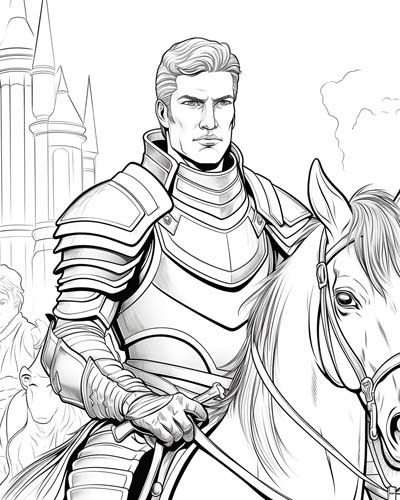 Sir Aglovale: Sir Aglovale, one of the lesser-known Knights of the Round Table, is often portrayed as a noble and valiant figure in Arthurian legend. He is the son of King Pellinore and the brother of Sir Percival. Aglovale's adventures, while less prominent than some of the more famous knights, contribute to the overall richness of the Arthurian narrative, showcasing his commitment to chivalry and his role within the fellowship.
Sir Aglovale: Sir Aglovale, one of the lesser-known Knights of the Round Table, is often portrayed as a noble and valiant figure in Arthurian legend. He is the son of King Pellinore and the brother of Sir Percival. Aglovale's adventures, while less prominent than some of the more famous knights, contribute to the overall richness of the Arthurian narrative, showcasing his commitment to chivalry and his role within the fellowship.
 Sir Agravain and Sir Gaheris: Sir Agravain and Sir Gaheris, both lesser-known but significant Knights of the Round Table, are often overshadowed by their more illustrious companions. Agravain, known for his loyalty and sometimes depicted as less scrupulous, plays a role in the tragic events surrounding the affair between Queen Guinevere and Sir Lancelot. Gaheris, on the other hand, is the younger brother of Agravain and is typically portrayed as a noble and honorable knight.
Sir Agravain and Sir Gaheris: Sir Agravain and Sir Gaheris, both lesser-known but significant Knights of the Round Table, are often overshadowed by their more illustrious companions. Agravain, known for his loyalty and sometimes depicted as less scrupulous, plays a role in the tragic events surrounding the affair between Queen Guinevere and Sir Lancelot. Gaheris, on the other hand, is the younger brother of Agravain and is typically portrayed as a noble and honorable knight.
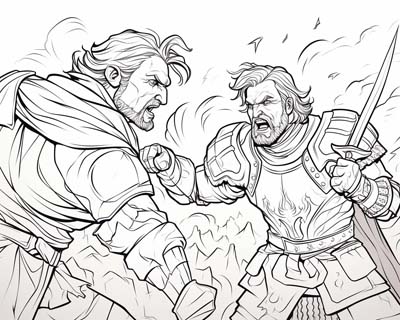 In some versions of the Arthurian legend, Agravain kills Gaheris. The tragic event occurs during the tumultuous aftermath of the discovery of the affair between Queen Guinevere and Sir Lancelot. Agravain, known for his loyalty to King Arthur and his strict adherence to the code of chivalry, reacts strongly to the perceived betrayal.
In some versions of the Arthurian legend, Agravain kills Gaheris. The tragic event occurs during the tumultuous aftermath of the discovery of the affair between Queen Guinevere and Sir Lancelot. Agravain, known for his loyalty to King Arthur and his strict adherence to the code of chivalry, reacts strongly to the perceived betrayal.
 In some narratives, Agravain confronts Lancelot and Guinevere, leading to a deadly altercation. Gaheris, witnessing the conflict, intervenes to defend his brother Agravain, but tragically, he is killed in the process. The death of Gaheris adds a poignant and heartbreaking element to the larger narrative of the fall of Camelot.
In some narratives, Agravain confronts Lancelot and Guinevere, leading to a deadly altercation. Gaheris, witnessing the conflict, intervenes to defend his brother Agravain, but tragically, he is killed in the process. The death of Gaheris adds a poignant and heartbreaking element to the larger narrative of the fall of Camelot.
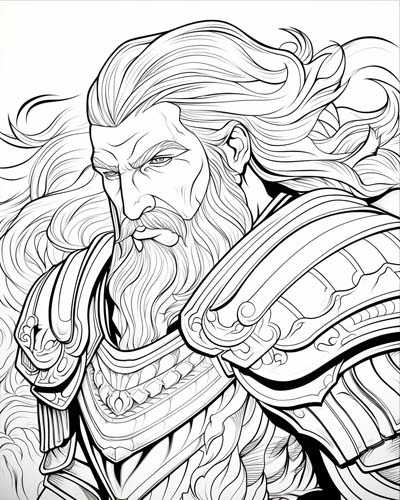 Sir Bagdemagus: Sir Bagdemagus is a knight of the Round Table in Arthurian legend, known for his prowess in combat and his chivalric qualities. While he is not as prominent as some of the more well-known knights, Bagdemagus plays a role in various adventures and quests associated with the fellowship. In some versions of the Arthurian tales, he participates in the quest for the Holy Grail, showcasing his dedication to the ideals of the Round Table.
Sir Bagdemagus: Sir Bagdemagus is a knight of the Round Table in Arthurian legend, known for his prowess in combat and his chivalric qualities. While he is not as prominent as some of the more well-known knights, Bagdemagus plays a role in various adventures and quests associated with the fellowship. In some versions of the Arthurian tales, he participates in the quest for the Holy Grail, showcasing his dedication to the ideals of the Round Table.
 Sir Cador: Sir Cador is a figure in Arthurian legend, often portrayed as a noble and valiant knight. He is sometimes identified as the Duke of Cornwall and is associated with the region known as Cornwall in the Arthurian tales. Cador is notable for his loyalty to King Arthur and his participation in various quests and battles as one of the Knights of the Round Table.
Sir Cador: Sir Cador is a figure in Arthurian legend, often portrayed as a noble and valiant knight. He is sometimes identified as the Duke of Cornwall and is associated with the region known as Cornwall in the Arthurian tales. Cador is notable for his loyalty to King Arthur and his participation in various quests and battles as one of the Knights of the Round Table.
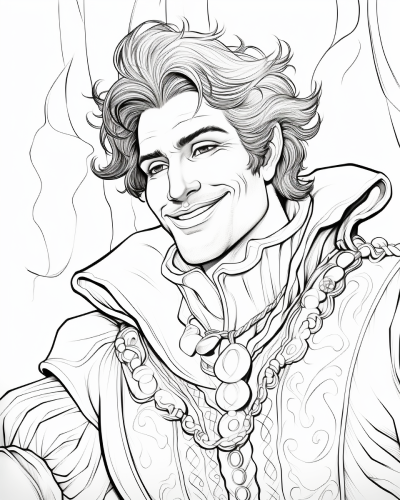
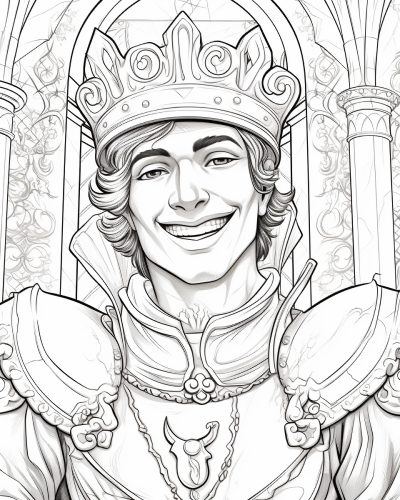 Sir Dagonet: Sir Dagonet is often considered one of the Knights of the Round Table in Arthurian legend. Unlike many of the more renowned knights, Dagonet is portrayed as a jester or fool, providing a unique and often tragicomic element to the fellowship. His character, while not as prominently featured in some versions of the Arthurian tales, contributes to the diversity of personalities within the Knights of the Round Table. Dagonet's inclusion highlights the multifaceted nature of the fellowship, showcasing not only the noble and heroic aspects of chivalry but also characters who bring a touch of humor and complexity to the legendary stories of Camelot.
Sir Dagonet: Sir Dagonet is often considered one of the Knights of the Round Table in Arthurian legend. Unlike many of the more renowned knights, Dagonet is portrayed as a jester or fool, providing a unique and often tragicomic element to the fellowship. His character, while not as prominently featured in some versions of the Arthurian tales, contributes to the diversity of personalities within the Knights of the Round Table. Dagonet's inclusion highlights the multifaceted nature of the fellowship, showcasing not only the noble and heroic aspects of chivalry but also characters who bring a touch of humor and complexity to the legendary stories of Camelot.
 Lord Esclabor: This character is a fascinating and complex figure, blending elements of a wandering Saracen lord with ties to the Middle East. His narrative, involving a long stay in Britain, attempts to conceal his faith, and eventual conversion to Christianity, adds layers of cultural and religious diversity to the Arthurian tales.
Lord Esclabor: This character is a fascinating and complex figure, blending elements of a wandering Saracen lord with ties to the Middle East. His narrative, involving a long stay in Britain, attempts to conceal his faith, and eventual conversion to Christianity, adds layers of cultural and religious diversity to the Arthurian tales.
 Sir Lanval: Sir Lanval is a knight of extraordinary beauty and prowess in Arthurian legend, famously featured in the medieval French poem "Lai de Lanval" by Marie de France. His tale revolves around a secret love affair with a mysterious, supernatural woman, and his unwavering loyalty to her leads him to face trials and vindication at the court of King Arthur.
Sir Lanval: Sir Lanval is a knight of extraordinary beauty and prowess in Arthurian legend, famously featured in the medieval French poem "Lai de Lanval" by Marie de France. His tale revolves around a secret love affair with a mysterious, supernatural woman, and his unwavering loyalty to her leads him to face trials and vindication at the court of King Arthur.
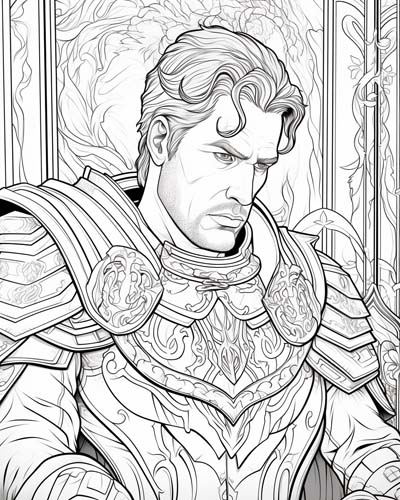
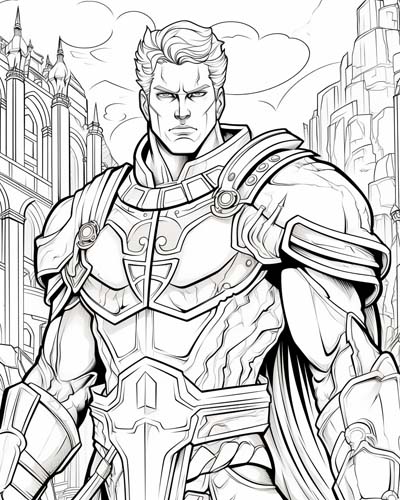 Sir Leodegrance: Sir Leodegrance is a character in Arthurian legend, often recognized as the father of Queen Guinevere. He is the king of Cameliard, and his kingdom plays a significant role in the Arthurian tales, particularly in the context of the marriage between Guinevere and King Arthur. Leodegrance is known for his nobility and is a key figure in the stories surrounding the Round Table. Sir Leodegrance's character adds depth to the narrative, contributing to the themes of love, chivalry, and the unity of the realm in Arthurian lore.
Sir Leodegrance: Sir Leodegrance is a character in Arthurian legend, often recognized as the father of Queen Guinevere. He is the king of Cameliard, and his kingdom plays a significant role in the Arthurian tales, particularly in the context of the marriage between Guinevere and King Arthur. Leodegrance is known for his nobility and is a key figure in the stories surrounding the Round Table. Sir Leodegrance's character adds depth to the narrative, contributing to the themes of love, chivalry, and the unity of the realm in Arthurian lore.
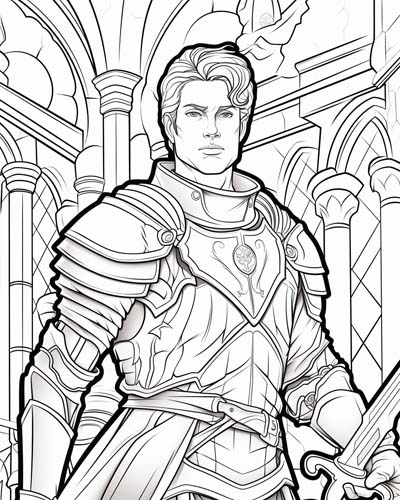 Sir Sagramor: Sir Sagramor le Desirous is a knight in Arthurian legend. He is one of the Knights of the Round Table and is known for his prowess in combat. Sagramore's character appears in various Arthurian romances and tales, contributing to the rich tapestry of the Arthurian legends.
Sir Sagramor: Sir Sagramor le Desirous is a knight in Arthurian legend. He is one of the Knights of the Round Table and is known for his prowess in combat. Sagramore's character appears in various Arthurian romances and tales, contributing to the rich tapestry of the Arthurian legends.
In some versions of the legend, Sir Sagramore is portrayed as a valiant and honorable knight, often participating in quests and adventures alongside other members of the Round Table. His character, like many of the knights, embodies the ideals of chivalry, bravery, and loyalty.
The prominence of Sir Sagramore in Arthurian stories may vary across different retellings, but he is generally recognized as one of the noble and skilled knights who served King Arthur at the Round Table.
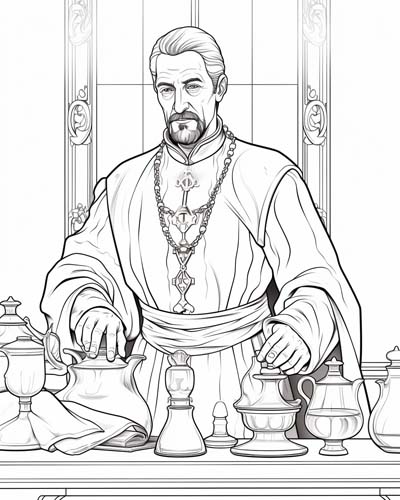
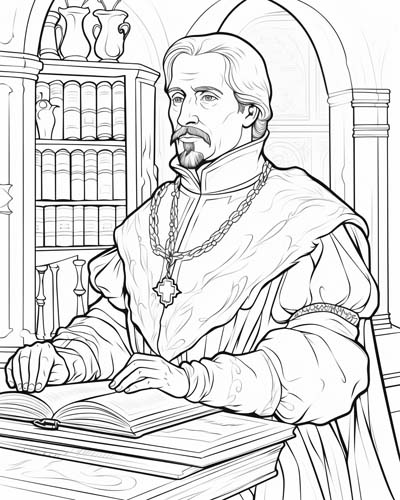 Sir Lucan: Sir Lucan is a knight in Arthurian legend, known for his loyalty and tragic fate. He is one of the Knights of the Round Table and serves King Arthur in various tales. While Lucan might not be as prominently featured as some of the more renowned knights, his character contributes to the broader narrative of Camelot.
Sir Lucan: Sir Lucan is a knight in Arthurian legend, known for his loyalty and tragic fate. He is one of the Knights of the Round Table and serves King Arthur in various tales. While Lucan might not be as prominently featured as some of the more renowned knights, his character contributes to the broader narrative of Camelot.
One of the most notable episodes involving Sir Lucan is his participation in the tragic Battle of Camlann. In the majority of versions of the Arthurian legend, Lucan is one of the last surviving knights alongside Bedivere. During the battle, Lucan is severely wounded, and despite his injuries, he remains loyal to King Arthur. Lucan's fate is often linked to the tragic downfall of Camelot and the death of King Arthur.
In some versions of the Arthurian legend, Sir Lucan is associated with a role similar to that of a butler or steward, particularly in relation to the Sword in the Stone episode. The Sword in the Stone is a well-known part of the Arthurian narrative where a sword is embedded in a stone, and the one who can pull it out is destined to become the true king of England.
Enemies of the Knights:

 Maleagant the Evil: Maleagant, also known as Maleagant the Evil, is a character in Arthurian legend and is an enemy of the Knights of the Round Table. He is often depicted as a villainous figure who plays a role in various tales of the Arthurian cycle. One of the most notable stories involving Maleagant is the abduction of Queen Guinevere.
Maleagant the Evil: Maleagant, also known as Maleagant the Evil, is a character in Arthurian legend and is an enemy of the Knights of the Round Table. He is often depicted as a villainous figure who plays a role in various tales of the Arthurian cycle. One of the most notable stories involving Maleagant is the abduction of Queen Guinevere.
In some versions of the legend, Maleagant kidnaps Guinevere and takes her to his magical castle. This incident leads to a series of adventures and quests, as knights, including Lancelot, embark on a mission to rescue the queen. The rescue mission contributes to the larger narrative of chivalry, loyalty, and the complexities of the relationships within the Arthurian court.
Maleagant's character serves as a foil to the ideals of the Round Table, representing treachery and villainy in contrast to the virtues of the noble knights. The stories involving Maleagant showcase the moral challenges and conflicts that the Arthurian heroes must confront on their quests and add dramatic tension to the overall narrative.
 Mordred: Mordred, the ill-fated character in Arthurian legend, is most commonly recognized as the illegitimate son of King Arthur, born from a complicated and often tragic lineage. His narrative is intertwined with themes of betrayal and destiny, as Mordred is frequently portrayed as a traitorous figure who plays a pivotal role in the downfall of Camelot. Mordred's actions lead to the Battle of Camlann, a conflict that marks the tragic end of both him and King Arthur. The tale of Mordred underscores the intricate web of familial strife and the inevitable consequences that contribute to the enduring tragedy of the Arthurian legend.
Mordred: Mordred, the ill-fated character in Arthurian legend, is most commonly recognized as the illegitimate son of King Arthur, born from a complicated and often tragic lineage. His narrative is intertwined with themes of betrayal and destiny, as Mordred is frequently portrayed as a traitorous figure who plays a pivotal role in the downfall of Camelot. Mordred's actions lead to the Battle of Camlann, a conflict that marks the tragic end of both him and King Arthur. The tale of Mordred underscores the intricate web of familial strife and the inevitable consequences that contribute to the enduring tragedy of the Arthurian legend.